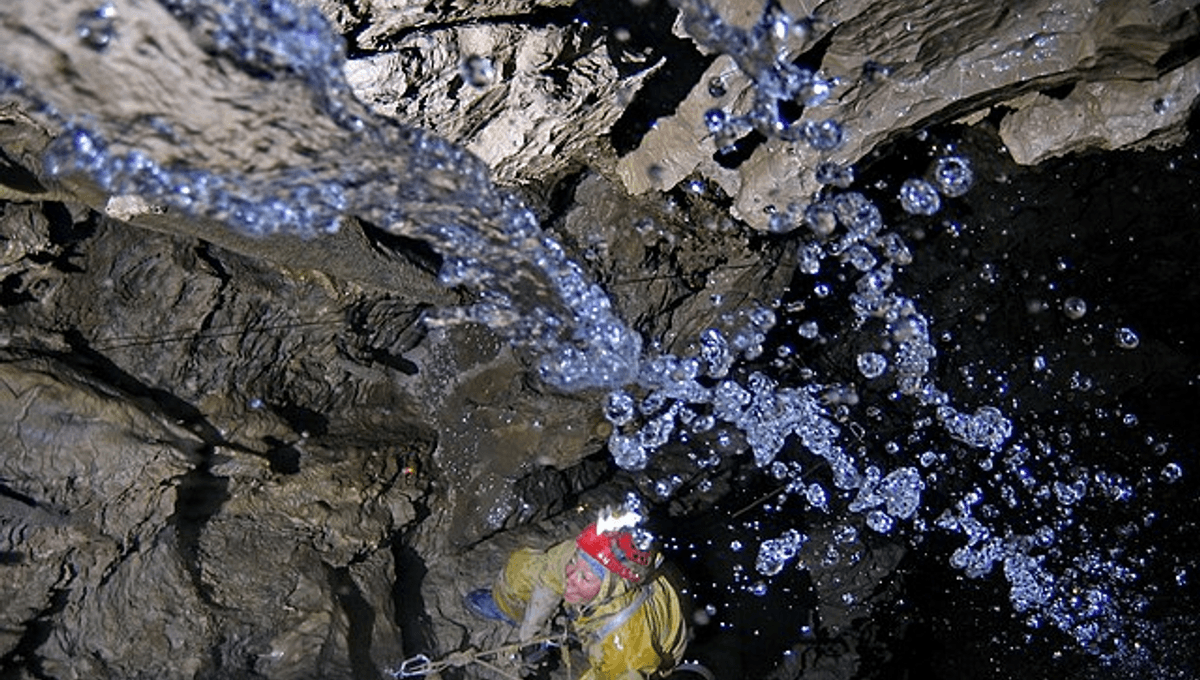
Krubera Cave is a special and terrifying cave, one that is so deep and expansive, we still haven’t reached the bottom. Cave exploring doesn’t usually go hand-in-hand with claustrophobia, but this is one cave where that won’t be a problem – some of the steep vertical pits are so large, the Statue of Liberty wouldn’t even touch the ceiling.
Hidden in the separatist region of Arabika, Georgia, the entrances to the cave do not make themselves known until explorers make an arduous journey through the steep Gagra range. The trail passes near the Black Sea and features a tricky series of ascents and descents, making expeditions to Krubera Cave far more than just diving right in. Once you’ve arrived, you might be slightly disappointed – there is no gigantic hole in the side of a cliff face to welcome you in, just six small entrances to begin abseiling down. To those who are unaware of what’s inside, the cave looks unremarkable.
Once you’ve taken the plunge, however, you’ll be greeted by some of the most intense geology in the world. Characterized by a series of dramatic pits, chasms, and tunnels, this cave is the second deepest in the world and often drops up to 100 meters (328 feet) at a time, providing no way down but by dangling off a rope.
The remarkable geology of the cave within this mountain range makes for sheer vertical drops that look as if they were carved intentionally downwards, often spanning across multiple layers of fossil rocks. There are even freezing underground waterfalls – essentially, it would be the ideal supervillain lair.
How deep is it? Frankly, we don’t know. The deepest explored point is 2,199 ± 20 meters (7,215 ± 66 feet) from the highest entrance, which was completed by Ukranian diver Gennady Samokhin in 2012, but it remains incredibly difficult to map. Many chambers are completely flooded with water, requiring specialist diving equipment and training, while also needing to have abseiled down hundreds of meters to reach them. The logistical cost and risk associated with exploring this cave makes it a painstaking process of reaching further and further down one expedition at a time.
A map of Krubera Cave: the deepest cave on earth, going down more than 2000 meters under the earth with air and waterfalls all the way down. It takes more than a month to reach the bottom. [640×1441]
by u/saturdayraining in MapPorn
In many cases, the exploration team were required to carve through rock to continue on their journey, while their nights were spent camping deep in the cave, huddling together in a tent for warmth. Cave divers tell stories of those before them taking two weeks before surfacing from Krubera Cave, so those wanting to make expeditions into it are there for the long haul.
For now, Krubera Cave remains the second deepest known to humans, with the deepest also in the same region nearby. Veryovkina Cave is 2,212 meters (7,257 feet) deep, making it just over 10 meters deeper than our furthest explored point in Krubera, indicating it could dethrone the top dog – that is, if someone is brave enough to try it.
Source Link: Krubera Cave Is The Most Impressive And Terrifying Cave We've Ever Seen